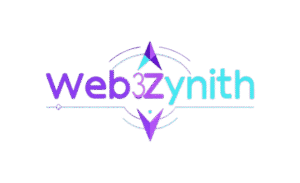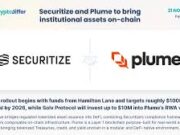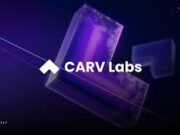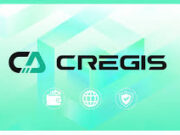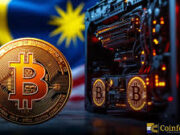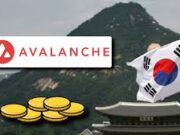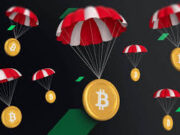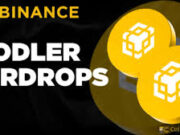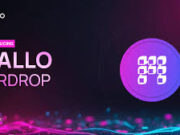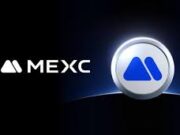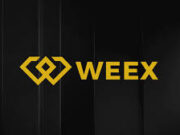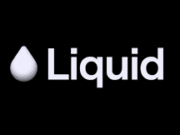In the rapidly evolving world of decentralized finance (DeFi), Uniswap stands out as a cornerstone of the ecosystem, revolutionizing how users trade cryptocurrencies without intermediaries. Launched in 2018, Uniswap has become the leading decentralized exchange (DEX) by trading volume, empowering millions to swap tokens, provide liquidity, and participate in DeFi governance. As of June 13, 2025, Uniswap’s native token, $UNI, trades at approximately $7.50, with a market cap of $4.5 billion, and the platform processes billions in monthly trading volume. This exhaustive blog post dives deep into Uniswap’s history, technology, features, tokenomics, governance, and future outlook, explaining why it remains a powerhouse in DeFi and how you can get started using it.
What is Uniswap?
Uniswap is a decentralized exchange protocol built on the Ethereum blockchain (and later expanded to other chains like Base, Polygon, and Optimism) that allows users to trade ERC-20 tokens without a centralized intermediary. Unlike traditional exchanges like Binance or Coinbase, Uniswap operates as a set of smart contracts, enabling peer-to-peer token swaps, liquidity provision, and yield farming in a trustless, permissionless environment. Its core innovation is the Automated Market Maker (AMM) model, which replaces order books with liquidity pools to facilitate trades.
Founded by Hayden Adams in 2018, Uniswap was inspired by a blog post from Ethereum co-founder Vitalik Buterin about AMMs. With a $100,000 grant from the Ethereum Foundation, Adams built Uniswap as an open-source protocol, democratizing access to crypto trading. Today, Uniswap is the largest DEX, with over $6 billion in total value locked (TVL) and a daily trading volume often exceeding $1 billion.web:0,2,4,8,11,16,20
How Uniswap Works: The AMM Model
Uniswap’s brilliance lies in its Automated Market Maker (AMM) system, which eliminates the need for traditional buyers and sellers to match orders. Here’s a detailed breakdown of how it functions:
1. Liquidity Pools
- Instead of an order book, Uniswap uses liquidity pools—pools of paired tokens (e.g., ETH/USDC) provided by users called liquidity providers (LPs).
- Each pool operates as a smart contract holding two tokens in a 50/50 value ratio. For example, an ETH/USDC pool contains equal dollar values of ETH and USDC.
- LPs deposit tokens into these pools and receive LP tokens in return, representing their share of the pool. These tokens can be redeemed to withdraw funds plus earned fees.web:0,2,4,8,11
2. Constant Product Formula
- Uniswap uses the constant product formula (x * y = k), where:
- x and y are the quantities of the two tokens in a pool.
- k is a constant that ensures the product of the token quantities remains fixed.
- When a user swaps Token A for Token B, the pool’s balance adjusts, increasing the price of Token B and decreasing the price of Token A, maintaining the constant k. This creates a self-regulating pricing mechanism.web:0,2,8,11
3. Trading and Fees
- Users can swap any ERC-20 token pair available in a Uniswap pool (e.g., ETH/DAI, UNI/USDT).
- Trades incur a 0.3% fee (adjustable in Uniswap V3 to 0.05%, 0.3%, or 1% depending on the pool), which is distributed to LPs proportional to their share. This incentivizes liquidity provision.
- For example, a $1,000 trade generates a $3 fee, which is added to the pool for LPs to claim.web:0,2,4,11
4. Price Impact and Slippage
- Large trades in smaller pools can cause price impact, where the token price shifts significantly due to the constant product formula.
- Users set a slippage tolerance (e.g., 0.5%) to ensure trades execute within an acceptable price range. High volatility or low liquidity can lead to slippage, so users must monitor pool sizes.web:2,8
Evolution of Uniswap: V1, V2, V3, and V4
Uniswap has evolved through multiple versions, each introducing groundbreaking features:
Uniswap V1 (November 2018)
- Launched as the first AMM DEX on Ethereum.
- Supported only ETH/ERC-20 token pairs (e.g., ETH/DAI).
- Used a fixed 0.3% fee and basic liquidity pools.
- Lacked advanced features but proved the AMM concept.web:0,2,11
Uniswap V2 (May 2020)
- Introduced token-to-token pairs (e.g., DAI/USDC), removing the need for ETH as an intermediary.
- Added flash swaps, allowing users to borrow tokens without upfront collateral, provided they repay within the same transaction (useful for arbitrage).
- Improved price oracles for better price data, benefiting other DeFi protocols.
- Reduced gas costs and enhanced pool efficiency.web:0,2,11,16
Uniswap V3 (May 2021)
- Introduced concentrated liquidity, allowing LPs to allocate capital within specific price ranges (e.g., $2,000–$3,000 for ETH/USDC), increasing capital efficiency up to 4,000x compared to V2.
- Added multiple fee tiers (0.05%, 0.3%, 1%) to cater to different pool types (e.g., stablecoin pairs vs. volatile pairs).
- Implemented non-fungible LP positions, where LP tokens are unique NFTs, offering flexibility but increasing complexity.
- Expanded to Layer 2 networks like Optimism, Arbitrum, and Polygon for lower gas fees.web:0,2,4,11,16
Uniswap V4 (Announced 2023, Expected 2025)
- Introduces hooks, customizable smart contract extensions that allow developers to add features like limit orders, dynamic fees, or on-chain oracles.
- Features a singleton architecture, consolidating all pools into one contract to reduce gas costs by up to 99% for pool creation.
- Includes native ETH support, simplifying swaps and reducing wrapping/unwrapping costs.
- Aims to enhance customization while maintaining Uniswap’s core AMM model. As of June 2025, V4 is in testing, with a full release expected soon.web:4,11,16,20
The $UNI Token: Governance and Utility
The $UNI token, launched in September 2020, is Uniswap’s governance token, empowering the community to shape the protocol’s future. Key details include:
- Total Supply: 1 billion $UNI, with 60% allocated to the community, 21.3% to the team and investors (with vesting), and the rest for advisors, grants, and liquidity programs.
- Governance: $UNI holders vote on protocol upgrades, fee structures, and treasury allocations. Proposals require 4% of the total supply (40 million $UNI) to pass.
- Fee Switch Debate: A long-discussed “fee switch” would divert a portion of trading fees (e.g., 0.05%) to $UNI holders or the treasury, but it remains unimplemented due to regulatory concerns.
- Price and Market: As of June 13, 2025, $UNI trades at ~$7.50, down from its all-time high of $44.92 in May 2021 but showing bullish momentum with a 10.3% weekly gain. Analysts predict $UNI could reach $10–$15 by Q4 2025 if DeFi adoption grows.web:0,2,7,8,10,15,22
$UNI’s value is tied to Uniswap’s dominance in DeFi and governance participation, though its lack of direct utility (e.g., no staking rewards) has sparked criticism on X, with some users calling it a “governance-only token.” Others argue its value lies in Uniswap’s ecosystem growth.post:3,5
Key Features of Uniswap
Uniswap’s versatility makes it a go-to platform for DeFi participants. Here are its core features:
- Token Swaps:
- Swap any ERC-20 token instantly via Uniswap’s interface (app.uniswap.org) or integrated wallets like MetaMask.
- Supports thousands of tokens, from major assets like ETH and USDC to niche tokens like $IRIS or $SHIB.
- Liquidity Provision:
- Users can become LPs by depositing token pairs into pools, earning 0.3% (or other) fees on trades.
- V3’s concentrated liquidity allows LPs to optimize returns but introduces risks like impermanent loss (when token price ratios shift, reducing LP value).
- Governance:
- $UNI holders propose and vote on changes, such as fee adjustments or protocol expansions.
- The Uniswap Foundation, funded by the treasury, supports development and grants.
- Cross-Chain Support:
- Uniswap operates on Ethereum, Base, Arbitrum, Optimism, Polygon, and others, offering low-cost trading on Layer 2 networks.
- The Uniswap Bridge simplifies cross-chain transfers, enhancing accessibility.
- Analytics and Oracles:
- Uniswap’s price data feeds other DeFi protocols, acting as a reliable oracle.
- Tools like Uniswap Info provide real-time data on pool performance, volume, and fees.web:0,2,4,8,11,16,20
Getting Started with Uniswap
Here’s a step-by-step guide to using Uniswap as of June 13, 2025:
Step 1: Set Up a Web3 Wallet
- Download a Wallet: Use MetaMask, Coinbase Wallet, or OKX Wallet to interact with Uniswap.
- Fund the Wallet: Add ETH (for Ethereum mainnet) or a small amount of native tokens (e.g., MATIC for Polygon) for gas fees. Base and Arbitrum offer lower fees for Layer 2 trading.
Step 2: Access Uniswap
- Visit the Interface: Go to app.uniswap.org and connect your wallet.
- Select Network: Choose Ethereum for high liquidity or a Layer 2 like Base for lower fees.
Step 3: Swap Tokens
- Choose Tokens: Select the tokens to swap (e.g., ETH to USDC). Ensure the pool has sufficient liquidity to avoid high slippage.
- Set Slippage Tolerance: Default is 0.5%; adjust higher (e.g., 1–3%) for volatile or low-liquidity tokens.
- Approve and Swap: Approve the token spend (a one-time gas fee) and confirm the swap. For example, swapping 0.1 ETH (~$270) for USDC takes seconds.
Step 4: Provide Liquidity (Optional)
- Select a Pool: Choose a pair (e.g., ETH/USDC) and deposit equal value amounts. In V3, set a price range for concentrated liquidity.
- Receive LP Tokens: These represent your pool share and accrue fees.
- Monitor Impermanent Loss: Use tools like DeFiLlama to track pool performance.
Step 5: Participate in Governance (Optional)
- Hold $UNI: Purchase $UNI on Uniswap or exchanges like Binance.
- Vote: Visit gov.uniswap.org to propose or vote on governance changes.
- Delegate Voting Power: If you don’t want to vote directly, delegate your $UNI to active community members.
Step 6: Stay Safe
- Verify Contracts: Only interact with official Uniswap contracts (check uniswap.org for addresses).
- Beware Scams: Avoid phishing sites mimicking Uniswap’s interface.
- Manage Gas Fees: Use Layer 2 networks or trade during low-gas periods (e.g., weekends) to save costs.web:0,2,8,11,18
Uniswap’s Role in DeFi and Market Position
Uniswap dominates the DEX landscape, accounting for over 50% of Ethereum-based DEX trading volume and ~20% of total DeFi TVL ($6 billion of $30 billion). Its closest competitors, PancakeSwap (Binance Smart Chain) and Curve (stablecoin-focused), trail in volume and versatility. Key stats as of June 2025:
- Trading Volume: ~$1.5 billion daily, $40 billion monthly.
- TVL: $6 billion across Ethereum and Layer 2s.
- Active Users: Over 1 million monthly active wallets.
- Token Pairs: Thousands, covering major and niche ERC-20 tokens.web:0,2,7,10,15
Uniswap’s dominance stems from its open-source ethos, deep liquidity, and developer ecosystem. Over 300 integrations, including wallets (MetaMask, Trust Wallet) and protocols (Aave, Compound), rely on Uniswap’s infrastructure. Its price oracles are critical for DeFi lending and derivatives platforms.web:0,4,11
However, competition is intensifying. SushiSwap, a Uniswap fork, offers additional incentives like staking rewards, while Aerodrome (on Base) and Curve compete on low-fee stablecoin swaps. Posts on X highlight Uniswap’s high gas fees on Ethereum mainnet as a drawback, though Layer 2 deployments mitigate this.post:3,6
Challenges and Risks
Despite its success, Uniswap faces several challenges:
- High Gas Fees: Ethereum mainnet transactions can cost $5–$50 during congestion, pushing users to Layer 2s or competitors like PancakeSwap.
- Impermanent Loss: LPs risk losses if token prices diverge significantly, especially in volatile pools.
- Regulatory Scrutiny: The SEC’s 2024 Wells Notice to Uniswap Labs raised concerns about potential securities violations, particularly regarding LP tokens and the fee switch. While unresolved, this could impact operations.web:13,20
- Competition: New DEXs with lower fees or novel features (e.g., Aerodrome’s ve-token model) challenge Uniswap’s market share.
- Complexity: V3’s concentrated liquidity and V4’s hooks increase the learning curve for new users.
Future Outlook for Uniswap
Uniswap’s roadmap for 2025 and beyond is promising, driven by technological and market developments:
- Uniswap V4 Launch: Expected in Q3 2025, V4’s hooks and singleton architecture will enhance customization and reduce costs, potentially increasing adoption.web:4,11
- Layer 2 Expansion: Continued growth on Base, Arbitrum, and Optimism will lower fees and attract retail users.
- Fee Switch Activation: If implemented, diverting fees to $UNI holders could boost token value, though regulatory hurdles remain.
- AI and Web3 Integration: As AI-driven projects like Virtuals Protocol gain traction, Uniswap could facilitate trading for AI tokens (e.g., $IRIS), capitalizing on the AI narrative.
- Price Predictions: Analysts forecast $UNI at $10–$15 by Q4 2025, with bullish scenarios reaching $20 if DeFi TVL grows to $50 billion. Long-term (2030), $UNI could hit $30–$50 if Uniswap maintains its lead.web:7,10,15,22
Posts on X are bullish, with users like
@CryptoWizardX predicting “$UNI to $15 by EOY” due to V4 and Bitcoin’s $100,000+ rally driving DeFi interest. However, some warn of regulatory risks, noting “SEC pressure could cap UNI’s upside.”post:2,5
Why Uniswap Matters in 2025
Uniswap’s impact extends beyond trading. It’s a pillar of DeFi, enabling:
- Financial Inclusion: Permissionless access to trading for anyone with a wallet, bypassing centralized gatekeepers.
- Innovation Hub: Developers build on Uniswap’s open-source code, creating new DeFi apps and integrations.
- Web3 Foundation: As Web3 grows, Uniswap’s role in tokenizing assets (e.g., AI agents, NFTs) positions it at the forefront of decentralized economies.
For users, Uniswap offers a low-barrier entry to DeFi, with opportunities to trade, earn fees, or govern a multi-billion-dollar protocol. Its resilience—surviving crypto winters, regulatory scrutiny, and competition—underscores its staying power.
Conclusion
Uniswap is more than a DEX; it’s a transformative force in DeFi, redefining how we trade, invest, and govern digital assets. Its AMM model, open-source ethos, and community-driven governance have made it the go-to platform for millions, processing billions in trades monthly. From its humble beginnings in 2018 to its V4 evolution in 2025, Uniswap continues to innovate, offering low-cost trading on Layer 2s, concentrated liquidity, and customizable hooks.
Whether you’re a trader swapping tokens, an LP earning fees, or a $UNI holder shaping governance, Uniswap provides endless opportunities in DeFi. Start small with a Web3 wallet, explore pools on Base or Arbitrum, and stay informed about V4’s launch. While risks like volatility and regulation persist, Uniswap’s track record and roadmap make it a cornerstone of the decentralized future. As one X user put it, “Uniswap is DeFi’s heartbeat—still pumping strong in 2025.” Join the revolution and discover why Uniswap remains the king of DEXs.
Disclaimer: Cryptocurrency investments are highly volatile and carry significant risks. This blog post is for informational purposes only and does not constitute financial or investment advice. Always conduct your own research before using Uniswap or investing in crypto.
Sources:
- Uniswap Docs, CoinMarketCap, CoinGecko, DeFiLlama, CryptoNews, CoinTelegraph, The Block, Messari, CoinDesk, Binance, Yahoo Finance, 99Bitcoins, CryptoPotato, CoinPediaweb:0,2,4,7,8,10,11,13,15,16,18,20,22
- Posts on Xpost:2,3,5,6
